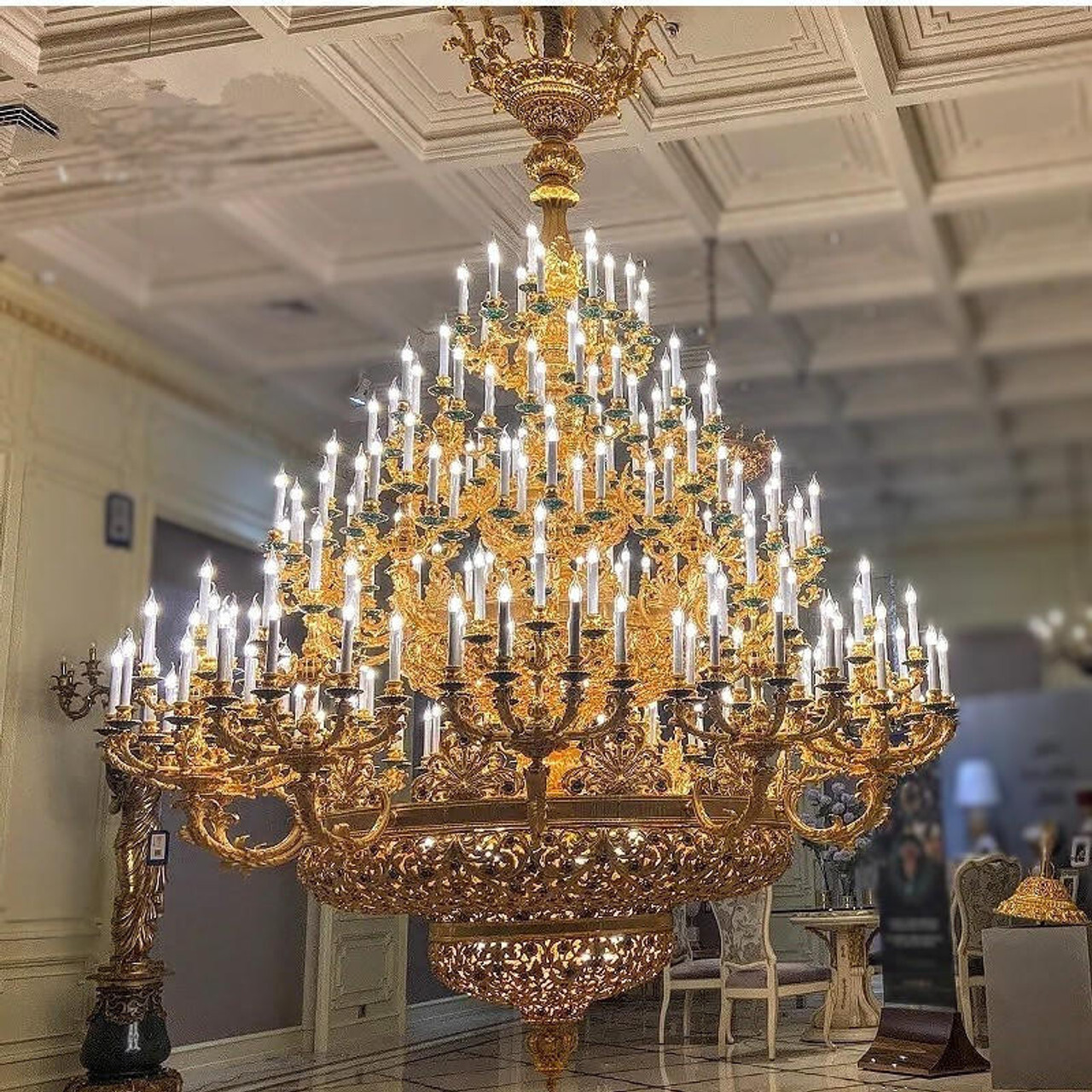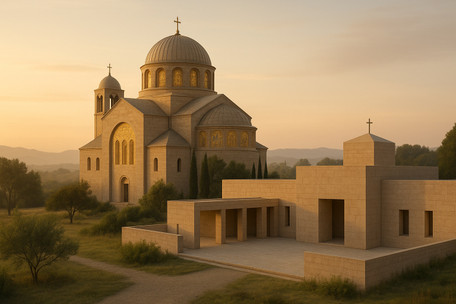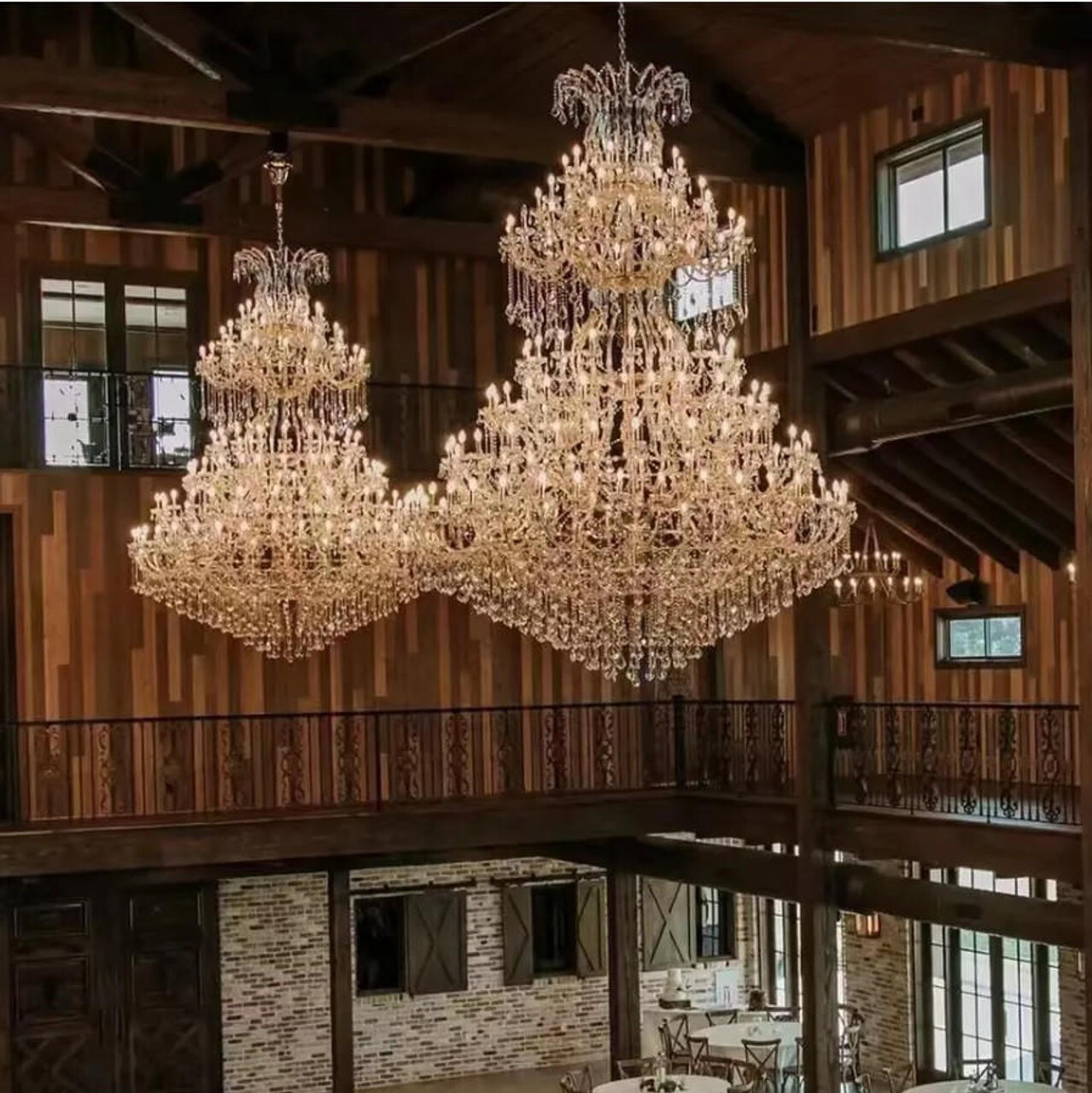How Byzantine Architecture Inspires Today's Monastic Modernism Movement
Posted by Elodie Allington - Architect on Apr 28, 2025
How Byzantine Architecture Inspires Today's Monastic Modernism Movement
Table of Contents
- Introduction
- The Foundations of Byzantine Architecture
- The Evolution Toward Monastic Modernism
- Key Inspirations: From Byzantine to Modern Monastic Design
- Light as Divine Presence
- Centralized and Symmetrical Plans
- Minimal Ornamentation, Maximal Meaning
- Material Authenticity
- The Dome as Cosmic Symbol
- Contemporary Examples of Monastic Modernism
- Philosophy Behind Byzantine Sacred Space
- Why Byzantine Inspiration Matters Today
- The Future of Monastic Modernism
- Final Thoughts
- FAQs About Byzantine Architecture and Monastic Modernism
Introduction
Byzantine architecture, with its majestic domes, intricate mosaics, and profound spirituality, has long fascinated architects and designers across the world. While initially rooted in religious and imperial expression during the Eastern Roman Empire, its influence has transcended centuries. Today, it finds a surprising and captivating new form: Monastic Modernism. This contemporary design movement reinterprets the spiritual and aesthetic ideals of Byzantine architecture for modern monastic and contemplative spaces. In this blog, we'll explore the ways Byzantine architecture continues to shape and inspire today's Monastic Modernism movement, blending tradition with innovation.

The Foundations of Byzantine Architecture
To understand its modern influence, we must first grasp what defines Byzantine architecture. Originating in the 4th century under Emperor Constantine, Byzantine architecture developed its distinct style through structures such as the Hagia Sophia, characterized by massive domes, centralized plans, and ornate iconography. Key features included:
- Domes resting on pendentives: Engineering marvels that created a feeling of the heavens above.
- Rich mosaics: Walls and ceilings adorned with glass and gold, telling sacred stories.
- Clerestory lighting: High windows that allowed ethereal light to flood sacred spaces.
- Centralized plans: Structures designed around a central core, creating a sense of unity and divine order.
The Hagia Sophia in Constantinople, built under Emperor Justinian I in the 6th century, remains the crowning achievement of Byzantine architecture. Its vast dome, seemingly suspended by light, became a visual metaphor for the heavens. Other examples, such as the Basilica of San Vitale in Ravenna, Italy, introduced intricate mosaics depicting both religious and imperial iconography, intertwining faith and power. Byzantine builders also developed techniques for blending complex structural systems with richly layered aesthetics, using brick, stone, and mortar in ways that still influence masonry today.
Beyond structural innovation, Byzantine spaces were imbued with a sense of mystical presence. The interplay of shadow and light, the symbolic geometry, and the acoustics designed to enhance chanting all worked together to create a transcendent atmosphere. Byzantine architecture was never simply about form; it was about shaping human experience.
The Evolution Toward Monastic Modernism
Monastic Modernism is not merely a stylistic trend; it is a philosophical approach to space that emphasizes simplicity, spirituality, and connection to the divine. Emerging in the 20th and 21st centuries, it was fueled by:
- Minimalism: The reduction of forms to essentials.
- Austerity: A return to simplicity and spiritual focus.
- Material honesty: Using natural, often unadorned materials to speak to authenticity.
- Spatial serenity: Creating environments that foster meditation and inner peace.
Influences from early modernist architects like Le Corbusier and Ludwig Mies van der Rohe, who valued "less is more" and the purity of materials, fed into the ideals of Monastic Modernism. Similarly, movements like the Bauhaus emphasized the spiritual power of simple, functional forms. As urban life became increasingly hectic, architects sought to design spaces that offered tranquility, purpose, and spiritual renewal — much like the ancient monasteries of Byzantium.
Today's monastic architects reinterpret the Byzantine emphasis on transcendence, light, and sacred space through a minimalist and modern lens. Rather than ornate decoration, Monastic Modernism seeks to achieve the same spiritual uplift with purity of form and material.
Key Inspirations: From Byzantine to Modern Monastic Design
Light as Divine Presence
Byzantine architects used clerestory windows and gold mosaics to create shimmering, otherworldly interiors. In Monastic Modernism, light is equally vital, but it is expressed through careful placement of windows, open courtyards, and skylights. Light isn't decorative; it is a living, breathing element that defines the spiritual atmosphere.
Example: Many modern monasteries utilize filtered natural light through narrow slits or soft glass panels to evoke an internal sense of the divine, echoing the Byzantine tradition. The Monastery of Sainte-Marie de La Tourette, designed by Le Corbusier, masterfully controls natural light to create an aura of mystery and reverence.
Centralized and Symmetrical Plans
The centralized plan of Byzantine churches, especially the Greek-cross design, emphasized unity and cosmic order. Modern monastic spaces often use similar centralized or symmetrical layouts to encourage contemplation and communal harmony.
Example: Circular or cruciform chapels and meditation rooms are common in new monastic projects, offering symbolic and practical echoes of ancient Byzantine designs. Many modern chapels create a "sacred center" where prayer naturally gravitates.
Minimal Ornamentation, Maximal Meaning
Byzantine spaces were heavily decorated, but every element had deep theological significance. Modern monastic design borrows the idea of "meaningful design," choosing sparse ornamentation but rich symbolism.
Example: A simple stone font, a single candle, or a solitary cross placed intentionally within a room creates focus and reverence. The language of simplicity becomes the new sacred art.
Material Authenticity
Byzantine builders used luxurious but natural materials — marble, stone, gold, and glass. Modern monastic architecture emphasizes honest materials like exposed concrete, reclaimed wood, and raw stone. The goal is a tactile connection to creation, a grounding in the real that points toward the eternal.
Example: The use of rammed earth walls, reclaimed wood beams, and untreated limestone floors in new chapels echoes the ancient material palette but with modern sustainability principles.
The Dome as Cosmic Symbol
The Byzantine dome, especially atop the Hagia Sophia, symbolized the vault of heaven. Some modern monasteries reinterpret the dome or curved ceiling to create a subtle sense of cosmic embrace without the grandeur.
Example: Barrel vaults, minimalist domes, and circular skylights reimagine the Byzantine cosmic symbolism in a subdued, contemplative way. An oculus cut into a concrete ceiling can flood a prayer room with vertical shafts of light, suggesting divine connection.
Contemporary Examples of Monastic Modernism
The Novy Dvur Monastery, Czech Republic
Designed by John Pawson, a master of minimalist architecture, the Novy Dvur Monastery reflects Monastic Modernism inspired by ancient Christian spaces. The use of whitewashed walls, natural stone, and filtered light mirrors Byzantine ideals of sacred space while embracing a clean, modern aesthetic. Simplicity and tranquility guide every aspect of the design, offering monks a silent, sacred environment for contemplation.
Monastery of Saint John the Baptist, England
Located in Essex, this Orthodox monastery shows a sensitive blending of ancient monastic principles with restrained contemporary design. Stone walls, simple wooden ceilings, and naturally lit chapels offer spaces where Byzantine influence is visible not through replication, but through symbolic spatial experience — unity, silence, and reverence for light dominate the architectural language.
The Bruder Klaus Field Chapel, Germany
Designed by renowned architect Peter Zumthor, this chapel embodies the spirit of Monastic Modernism through raw materiality and spatial transcendence. Constructed from rammed concrete with an oculus opening to the sky, the chapel channels the cosmic symbolism of Byzantine domes. The thick, earthen walls and minimalistic detailing offer a spiritual experience rooted in primordial and Byzantine ideas about sacred space.
Mount Angel Abbey Library, Oregon
While primarily a library, the Mount Angel Abbey Library designed by Alvar Aalto is deeply monastic in spirit. The layout emphasizes quietude and contemplation, using flowing natural light and human-scaled spaces. It represents a modern monastic vision where form follows function but still elevates the soul, echoing Byzantine sacred values in a secular context.
St. Benedict’s Monastery, Japan
Designed with a deep respect for traditional forms and local materials, St. Benedict’s Monastery in Japan subtly incorporates Byzantine spatial ideals. Its layout emphasizes sacred geometry, internal simplicity, and strategic use of filtered natural light to foster contemplation. The monastery’s restrained aesthetic, with its modest wooden structures and stone pathways, aligns deeply with the timeless spiritual principles first explored by Byzantine builders.
Pannonhalma Archabbey Visitor Center, Hungary
Blending the ancient with the modern, the Visitor Center at Pannonhalma Archabbey is an elegant minimalist insertion into the thousand-year-old Benedictine complex. Architects designed the structure with natural stone facades, minimalist lines, and expansive use of indirect natural lighting. It pays homage to Byzantine ideas of sacred architecture — spaces designed to evoke reverence, harmony, and spiritual elevation through proportion and material authenticity.
La Tourette Monastery, France
Constructed by Le Corbusier in the 1950s, La Tourette Monastery is considered one of the most iconic interpretations of Monastic Modernism. The building’s heavy use of raw concrete (brutalism) paradoxically creates a deeply spiritual atmosphere. Strategic slits for light, centralized layouts, and the interplay of mass and void echo Byzantine principles of sacred space — light, geometry, and transcendence — adapted through a stark, modern lens.
Philosophy Behind Byzantine Sacred Space
Byzantine sacred architecture was not merely an exercise in engineering or decoration; it was a profound theological statement materialized in stone, light, and mosaic. At its core, every element of Byzantine church design was an attempt to render the invisible visible — to create a space where the divine could be glimpsed by the human senses.
Sacred Geometry
Geometry played a crucial symbolic role in Byzantine architecture. Spatial proportions were deeply meaningful rather than arbitrary. The number three, representing the Holy Trinity, and the number four, symbolizing the earthly realm (four directions, four elements), often structured architectural forms. Octagons — a blending of three and four (3 + 4 = 7; 3 x 4 = 12) — suggested regeneration and eternal life. Every wall, dome, and nave was conceived as part of a cosmic order that mirrored divine harmony.
Light as Divine Revelation
Light was treated as a metaphor for divine presence and spiritual awakening. Byzantine churches often manipulated natural light to create shimmering, ethereal effects — mosaics reflecting glimmers of illumination, hidden clerestory windows flooding interiors with an otherworldly glow. Light was the architecture’s most mystical material, symbolizing the descent of the divine into the human world.
Spatial Journey and Transformation
Entering a Byzantine church was designed to be a pilgrimage of the soul. Moving from the narthex (representing the worldly domain) into the nave (community of believers) and finally toward the sanctuary (heaven) mirrored the spiritual journey toward enlightenment. Space was intentionally choreographed to evoke introspection, reverence, and a sense of transcendence.
In Monastic Modernism today, these philosophical principles persist. Architects still use sacred proportions, careful orchestration of light, and spatial progression to evoke internal transformation. Minimalist materials simply refine and distill these spiritual goals rather than erase them.
Why Byzantine Inspiration Matters Today
In an era marked by relentless noise, distraction, and hyper-connectivity, the serene and spiritually charged spaces offered by Monastic Modernism fulfill a deep and growing human need. Drawing from Byzantine architecture, modern designers tap into a wellspring of timeless principles that speak to the human spirit:
- Sacred Geometry: Designs that create harmony between human existence and divine order.
- Transcendence through Space: Elevating human consciousness through sacred architectural experience.
- Authentic Materiality: Connecting to nature and the eternal through the physical world.
Today's movements toward mindfulness, wellness retreats, and intentional community living increasingly seek architecture that embodies simplicity, introspection, and peace. These aspirations align perfectly with Byzantine sacred ideals. By revisiting and creatively interpreting the Byzantine past, modern architects are able to design environments that nurture not only physical needs but also emotional and spiritual well-being.
The Future of Monastic Modernism
As urban life becomes more crowded and digital distractions escalate, the hunger for spaces of silence, spiritual nourishment, and authentic connection to nature will only intensify. Monastic Modernism — rooted deeply in Byzantine sacred tradition — offers a guide to the future of architectural spirituality.
Future trends may include:
- Eco-Monasteries: Sustainable, off-grid communities that integrate sacred design with renewable energy, local materials, and deep ecology principles.
- Urban Sanctuaries: Minimalist spiritual centers nestled within cities, offering silence, meditation spaces, and simple beauty amidst urban chaos.
- Tech-Free Spiritual Retreats: Spaces purposefully devoid of digital technology to foster mindfulness, community, and sacred silence.
- AI-Assisted Sacred Architecture: Using artificial intelligence to optimize natural light, thermal comfort, and spiritual spatial qualities while maintaining sacred design principles.
- Hybrid Sacred Spaces: Inclusive environments welcoming people from various spiritual backgrounds, rooted in universal symbols of light, geometry, and transcendence.
Through all these evolutions, the ancient legacy of Byzantine architecture — its profound understanding of light, proportion, material, and spiritual ascent — will continue to inform how we shape spaces of meaning in the modern world.
Final Thoughts
Monastic Modernism is not simply a revival of ancient forms; it is a living, breathing dialogue between the eternal and the contemporary. In its serene spaces, filtered light, authentic materials, and thoughtful geometries, we hear echoes of Byzantine architects who sought to shape heaven on earth. Modern architects, by learning from these ancient principles, cultivate environments that nurture introspection, clarity, and spiritual vitality — rare and precious gifts in an ever-changing world.
The enduring legacy of Byzantine architecture reminds us that design can aspire to more than utility or aesthetics — it can become a sacred act, shaping spaces where the human soul can rise toward the divine.
FAQs About Byzantine Architecture and Monastic Modernism
1. What is Byzantine architecture known for?
Byzantine architecture is known for its majestic domes, intricate mosaics, centralized floor plans, and the sophisticated use of natural light to create transcendent spaces. It emphasized the connection between the human and the divine, using space and symbolism to guide spiritual experience.
2. How did Byzantine architecture influence modern design?
Byzantine architecture influenced modern design through its sacred geometry, symbolic light usage, and profound understanding of spatial transcendence. Many minimalist and spiritual design movements — including Monastic Modernism — reinterpret Byzantine ideas for contemporary contemplative spaces.
3. What is Monastic Modernism?
Monastic Modernism is a contemporary architectural movement that draws on the simplicity, spiritual focus, and material authenticity of monastic traditions. It blends minimalist aesthetics with ancient sacred principles, often inspired directly by Byzantine ideals of space, light, and transcendence.
4. How is light used in Monastic Modernism?
Light in Monastic Modernism is an active material — not just illumination. Architects manipulate light through strategically placed windows, courtyards, and openings to create emotional and spiritual atmospheres. This mirrors the Byzantine tradition of using light symbolically as divine revelation.
5. Are there modern buildings influenced by Byzantine sacred spaces?
Yes. Notable examples include Novy Dvur Monastery in the Czech Republic, the Bruder Klaus Field Chapel in Germany, and La Tourette Monastery in France. These spaces reinterpret the Byzantine emphasis on sacred geometry, mystical light, and contemplative experience.
6. What materials are common in Monastic Modernism architecture?
Materials commonly include raw concrete, reclaimed wood, local stone, untreated metals, and other natural elements that emphasize honesty, authenticity, and connection to the earth — echoing the material richness of Byzantine architecture but interpreted through modern minimalism.
7. Why is sacred geometry important in architecture?
Sacred geometry aligns architectural design with universal principles of harmony, balance, and spiritual significance. In Byzantine and Monastic Modernist contexts, it organizes space into meaningful patterns that elevate the experience from mere functionality to transcendence.
8. Can Byzantine architecture be seen outside religious buildings today?
Absolutely. Byzantine architectural elements — like domes, mosaics, geometric floor plans, and light-centric spaces — can be found in civic architecture, museums, libraries, and even high-end residential designs seeking timeless and sacred qualities.
9. How do modern monasteries differ from ancient Byzantine ones?
While ancient Byzantine monasteries often displayed rich iconography and ornamentation, modern monasteries embracing Monastic Modernism focus on austerity, simplicity, and minimalism. Both, however, share core goals of fostering silence, contemplation, community, and divine connection.
10. What is the future of Monastic Modernism?
The future may see an expansion of eco-conscious monastic spaces, AI-optimized sacred designs, urban contemplative centers, and hybrid spiritual retreats that honor ancient sacred wisdom while addressing contemporary human needs for meaning, silence, and connection to nature.
Hi! We’re the Jas Writing Team — if you enjoyed this article, why not buy our writer a coffee? Every tip goes straight to the person behind the words — and yes, we really do spend it at our local coffee shop. Your support keeps the ideas (and lattes) flowing. Thank you!




